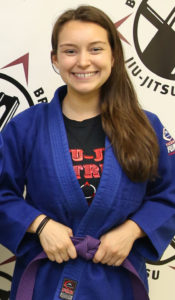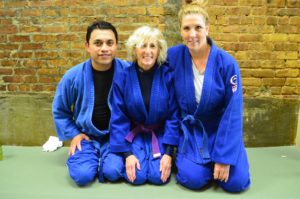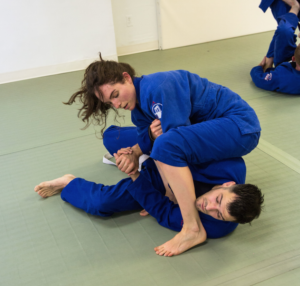
I just recently ran my third NYC Marathon, and once again had an incredible experience.
But running this one made me realize something very profound. It wasn’t because it was the hardest or the most grueling of the three. In fact, I think it was the best (if not the easiest) overall.
Of course, I could list tons of factors for why this race felt so great:
The weather…it was such a gorgeous day.
A great playlist…the tunes kept me dancing through the boroughs.
Training itself…I felt prepared for the long distance.
The support of people…the love and energy of friends, family, spectators.
In my experience, though, all of these add up to the one essential key factor in having this great experience:
…staying positive.
This time around, I focused on the people, on the weather, dancing to the beats rather than the little aches and pains here and there. I didn’t let them become a bigger issue and take over my mind. I focused on the end, rather than how much longer I had to run. The feeling I would have when crossing the finish line rather than how many more bridges I still need to cross.
And yes, there were moments of exhaustion and ‘Oh my god, two more hours…’ or ‘…my knees hurt’, I just tried to bring my mind back to the present as quickly as possible – to distract it – with positive thoughts.
But that’s just part of the story.
See, a few months ago, while training for the marathon, I listened to an audiobook by Haruki Murakami, an avid runner: What I Talk About When I Talk About Running.
He starts the book with this quote: “Pain is inevitable, suffering is optional.”
It resonated with me, at first just because of what it means for our physical bodies. But when I talked to one of my coworkers about this quote, he made the immediate connection to our mental wellbeing also.
He said: “It’s just like life in general.” I understood that there is pain in the things we go through every single day, but it is we who chooses how we process that pain. Do we explore it and absorb it, or do we turn our pain into suffering?
Shihan Dunn and Professor Glick always remind us to be a “good finder”. In other words, you can suffer and worry about situations…
Or you can try to stay positive, stay in the moment, stay present, so you don’t miss out on the good things around you that can actually help you through those difficult times.
I recently started to catch myself thinking about this quote whenever things get hard. It brings me back to the present, helps me to take a deep breath.
What’s more, it’s not only happening in training (when I feel unsatisfied with how I performed), or with teaching on the mat (when I feel that I didn’t give everything I could have to inspire students). But I see it also in my personal life when something unpleasant crosses my path.
Now, that doesn’t mean that I don’t let myself feel the pain. This isn’t a way to dull the experience. After all, pain is real in the moment it occurs.
Instead, I try to not dwell in it. I no longer follow threads like “Why is this only happening to me?”…which is something that would pull me deeper into it or which could start a domino effect of negativity.
I’ve come to believe that feeling pain, then working through it to find a solution, is a very important part of the learning process. It’s part of the self-study that comes with martial arts training. We learn how to explore the difficult things we face on a regular basis.
It’s true that it can get foggy sometimes. And yes, it seems sometimes that you’ll never be able to find your way out.
But training in the Martial Arts teaches you that everything takes time. You’re not a master in a day. In fact, Shihan Dunn reminds us regularly that it takes 10,000 repetitions to mastery.
What this means of us is that it takes practice to become more positive and to learn to see the light at the end of the tunnel. To become solution-oriented, rather than problem-oriented. Progress doesn’t happen in a day, it happens daily.
Through practice the period of suffering gets shorter. You start to realize that there is something you can do about the pain – you can get help, talk to someone or do something a little differently the next time you face a similar situation.
Eventually the pain will go away, the sun will rise again. And you’ll have to do it once again. But in the end, the difference isn’t in what happens, but the understanding of what happens: pain is inevitable, but suffering is optional.
Ms. Sonja Hofstetter was introduced to Brooklyn Brazilian Jiu-Jitsu by a dear friend and started training in October 2013. She holds a Blue Belt in Brazilian Jiu-Jitsu and a Purple Belt in Thai Boxing and also trains in Shotokan Karate. She is dedicated to the mission of BBJJ to help students reach their fullest potential, overcome obstacles and achieve their goals trough training in the Martial Arts. She is inspired by Shihan Dunn, her Professors and instructors and their unique and individual approach to training and teaching.








 I’ve always loved being a student.
I’ve always loved being a student. Why?
Why?
 Asking questions is an excellent way to expand your knowledge base in the martial arts classroom…and it’s a great habit to develop if you’re interested in your personal growth off the mat as well.
Asking questions is an excellent way to expand your knowledge base in the martial arts classroom…and it’s a great habit to develop if you’re interested in your personal growth off the mat as well. On the other hand…
On the other hand…